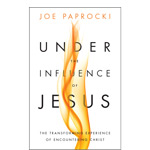
Welcome to the first post in my series on How to Be a More Evangelizing Catechist. In my introduction to the series, I talked about how marketing efforts often rely on nine formulaic strategies for persuading people that they need to purchase the product or service being advertised. They kick off their efforts by emphasizing that something is missing from your life or that something in your life, as you live it now, is broken and needs repair. Take, for instance, a TV ad for a flu remedy, which illustrates just how miserable it is to have the flu. The message is very clear: You are miserable, and we have the solution!
The first step in being a more evangelizing catechist is to invite those you are teaching to recognize that something is missing from their lives and that we experience much brokenness in our lives. The goal is not to point fingers at people and tell them that they are sinners and must repent or to make people feel miserable or guilty about their present state of life. Rather, it is to empathize pastorally with the hurt, pain, or emptiness that we all carry around in one form or another. Like the Apostles, we are called to proclaim that our current reality is broken and that God has intervened through his only Son, Jesus Christ, to offer us an alternate way of being human by living in an alternate reality known as the Kingdom of God—that “place” where God’s will reigns.
In a homiletics course I once took, the professor wisely suggested that every homily should begin with “bad news” and proceed to the “Good News” of Jesus Christ. He referred to how comedians often do “good news/bad news” jokes such as this: A doctor calls his patient and says, “I have good news and bad news. I got your test results back and you only have 24 hours to live!” The patient responds, “That’s terrible, doctor; what’s the good news?” The doctor responds, “Actually, that was the good news. The bad news is, I was supposed to call you 24 hours ago!”
The professor went on to explain that, in a homily (and for our purposes, in a faith formation lesson), we reverse the “good news/bad news” formula and rely on a “bad news/good news” approach. In other words, we begin by inviting our listeners/learners to consider some aspect of our reality that is broken—something that resonates with people so that, as they listen to us, they are thinking, “Yeah, that’s the story of my life!” Before we proclaim the Good News, we need to convince people that they need to hear it, and we do that by helping them to get in touch with their own incompleteness, emptiness, and/or brokenness. We need to convince people that we cannot save ourselves from our own dysfunctions but need an intervention that sets us on the road to “recovery.”
What might this look like in a catechetical setting? To illustrate, I’m not going to offer some “canned” idea from my past experience, but rather I am going to look (right now) to the Gospel for an example in the story of the Transfiguration (Mark 9:2–10), and offer an example spontaneously as if I were preparing to teach a class on the topic of the Transfiguration.
- I begin by reading and reflecting on the Scripture passage, asking myself what the Good News of this story is. (It may be helpful to look at some commentaries.) Know that there is not just one “correct” answer to this question of, “What is the good news of this story?”
- In my reflection, I am led to focus on the phrase, “This is my Son, whom I love. Listen to him!” (Mark 9:7).
- In my mind, then, the Good News of this story is that we have access to the voice of God through Jesus Christ, who is truly God from God, Light from Light!
- The bad news, then, is that we live in a time of confusion, a time of alternative facts. We often don’t know who to listen to. We find ourselves lost, confused, and even in despair, not knowing where truth can be found.
For my lesson, I would simply reverse the order of the above and start by inviting my learners to recognize that, when we turn on the news, we are bombarded by so many voices claiming to speak the truth, that it can make our heads spin. For younger children who may not be as aware of current events, I would invite them to recognize that they hear a lot of mixed messages from their friends about what is right and what is wrong, and that can create a lot of stress and confusion for them. In today’s Gospel, however, we have Good News! We learn that the voice of Jesus is the voice of God and therefore can be trusted! It is a voice that cuts through all of the confusion and shows us the way. It is a voice that we need. It is to our benefit to “listen to him” rather than to the many voices that steer us down the wrong paths.
So, the first step in being a more evangelizing catechist is to convince others that the message you are sharing—the Good News—is not just something “nice;” it is something they need!
 Download a flyer of the nine strategies. Go deeper with these ideas by reading my book, Under the Influence of Jesus: The Transforming Experience of Encountering Christ.
Download a flyer of the nine strategies. Go deeper with these ideas by reading my book, Under the Influence of Jesus: The Transforming Experience of Encountering Christ.





Thank you so much for this practical formula Joe! I will start using it in my class format tomorrow. Your ability to break teaching down in digestible tidbits allows me to integrate ideas easily into my curriculum. I appreciate the inbox ideas I receive weekly.
You’re very welcome, Anne! Glad to hear that you’re finding these ideas useful!
I enjoyed reading your article. I am a firm believer that to show the love of God to teens, it all should start with a strong catechists team, where everyone is welcome to share ideas (just like in Romans 12:3-5 we all have different talents). When there is a healthy and strong relationship within the catechists and their parish, the teen feel more inspired to be part of the reign of God.
Well said, Letty! When young people see a team of people on fire for the Lord, they are more likely to be inspired to seek the Lord themselves.